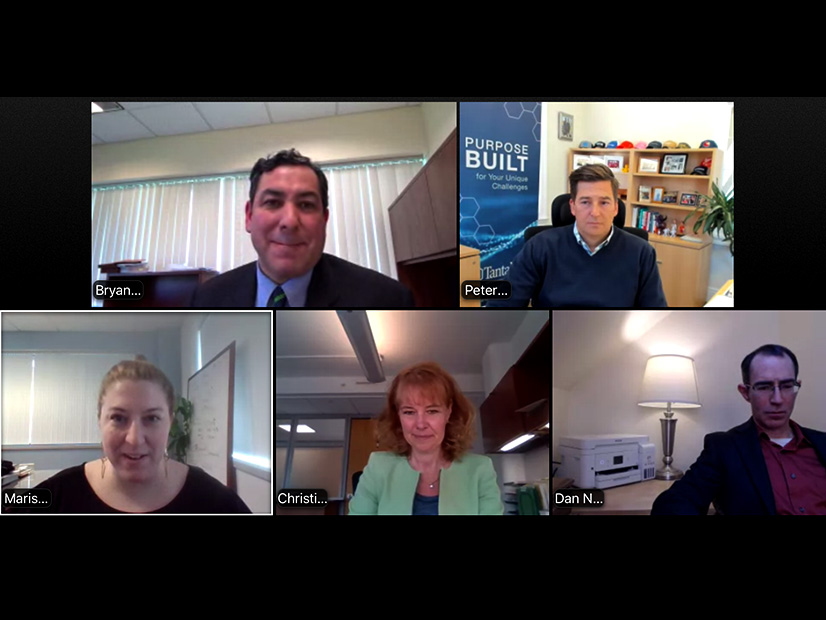Regulators in Connecticut are trying to create an environment in which stakeholders of the emerging electricity marketplace can safely innovate and scale new solutions.
The Connecticut Public Utilities Regulatory Authority (PURA) has expanded its docket on an Equitable Modern Grid to 11 tracks, which include creating a “regulatory sandbox,” Chair Marissa Gillett said.
A sandbox provides an opportunity to test products and services and establish guardrails to ensure consumer protection and ratepayer benefits. It would also encourage competition and further Connecticut’s public policy goals.
PURA is trying to project what the grid will look like in 10 years, Gillett said during the Connecticut Green Bank webinar Clean Tech in CT: A Sandbox for Local Innovators. And the track is meant to find ways to “foster and incentivize new solutions and ideas,” Gillett said.
PURA is not trying to dismantle “the inherent monopolies” of electric distribution companies (EDCs) like Eversource and Avangrid, Gillett said, adding that there is still a need for competition in the ideation space.
“I don’t think it’s a secret that traditional utility regulation is not particularly nimble or adaptable,” she said.
In December, PURA released a strategic vision document that builds on the concept of a sandbox for addressing the tension between EDCs and the regulators with limited waivers from standard regulations and requirements. It allows companies to test their products or services in a constrained and safe environment, often on an expedited basis.
That flexibility is especially critical for the introduction of new customer offerings. In the ever-evolving electricity marketplace, utilities, third-party innovators and regulators benefit from agile processes and approaches that can quickly scale up potential new solutions. PURA released the vision document to promote discussion of the potential sandbox framework.
“We’re used to these tried-and-true methods in the regulatory world, and introducing new ideas to that regime takes a very deliberate process that we’re trying to work through here,” Gillett said.
The goal of the sandbox should be creating a “safe space” to identify solutions that can either scale up quickly or “fail fast” with minimal ratepayer risk, she said.
Venture capital investor Connecticut Innovations is launching an innovation lab for investing in companies that are going to “get into that sandbox,” CEO Matthew McCooe said.
The firm invested $10 million across “six very strong clean tech companies” in the state, and their collective revenue for this year should be north of $200 million, which is “remarkable,” McCooe said.
Pete Londa, president and CEO of Tantalus, said the current grid was designed as a one-way flow of power that cannot deal with power coming from the home, electric vehicles or storage devices accessing and delivering energy. He said that the transformation to a two-way grid creates fear “because the world’s changing.”
“Utilities are challenged in that capacity of having to continue to leverage and maximize the value of existing infrastructure that wasn’t designed for the future innovation that leads to fear,” Londa said. “That fear leads to challenges and making decisions, and that’s an inhibitor.”
He added that Tantalus could help Eversource, for example, obtain more granular data at the “very edge” of its network that would not require the utility “to rip and replace 100% of the meters immediately.”
“They can continue to maximize the value of what they have while upgrading and preparing for the future; as things evolve and change, it would be immediate savings out of the gate to allocate those dollars to other initiatives across the organization,” Londa said. “Ultimately, it would help them improve their impact on the environment, improve their services to their community and ultimately lead to better governance inside their organization in terms of how they’re allocating dollars.”


